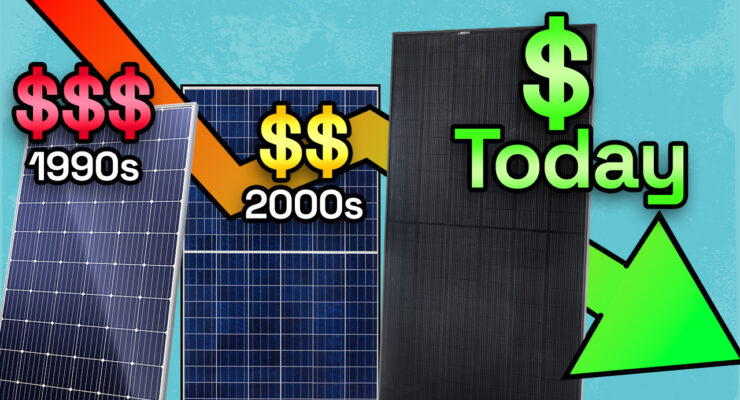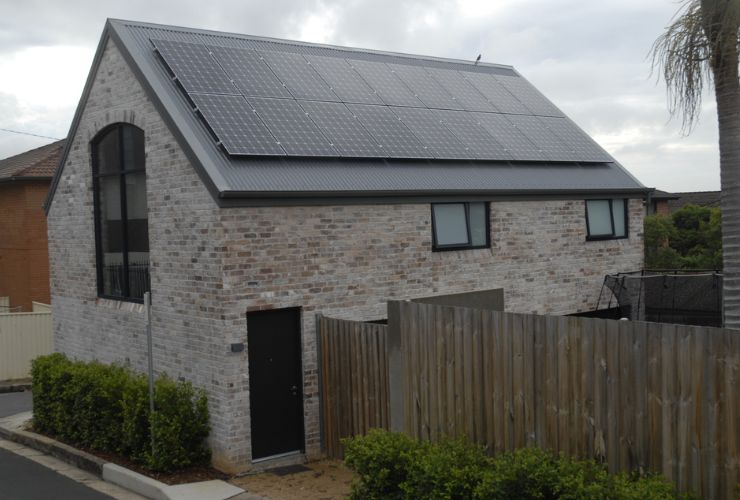
Fast read
In Australia, the cost of solar panels and inverters has decreased over the past 15 years. For example, a 400-watt panel now costs roughly a third of what it did in the 1990s. However, some industry analysts believe that the largest supplier of solar panels, China, has increased business costs. This would put an end to the trend of falling prices.
It is suggested to buy a quality solar system now rather than waiting for prices to decrease even more because it will last longer and offer more advantages in the long run. On the other hand, avoiding inexpensive solar systems is also advised because they might not last as long and might not offer the required benefits.
To guarantee the finest solar system is bought and installed. It is advised to engage with a qualified local provider or installer.
Are solar systems getting cheaper each year?
A quality residential solar system in the current environment has a payback of around 3 to 5 years. At the same time, some of the cheap solar panel systems might have an even shorter payback of 2-3 years or for absolute crap. So, in a short to medium timeframe, the cheap stuff will break down and certainly return fewer funds than the better, longer-lasting quality systems. So if one seeks better environmental and financial outcomes – go for the good quality solar panels.
Over the past 15 years in Australia, one rule did apply consistently. This was – solar panels and inverters were getting cheaper.
So in the early 1990s, a solar panel was $10 per watt, so you would have paid $750 for a 75-watt panel. Today a well-built 400Watt panel with more than five times the initial power capacity – will only cost you a third of the price.
What does it all mean?
Thinking about getting solar panels at an even lower cost? Well, it’s worth understanding that waiting might not lead to substantial savings. Let’s explore why the idea of prices dropping significantly could be changing.
The time of prices constantly going down for solar panels and inverters might be slowing down. Even though there are cheap solar panel options, expecting a significant price drop might not be particularly likely.
While solar panels might get a bit more powerful, like going from 400 to 440 Watts, the overall cost might not go down much. Inverter prices are also expected to stay about the same.
Many solar panels, even from other places, often have parts made in China. This connection with Chinese manufacturing might mean that prices won’t drop a lot but stay more steady.
More and more people want solar energy globally, making it a hot commodity. Waiting for prices to drop might not match this growing demand, making significant price reductions less likely.
Waiting for a significant price drop might not be the best plan. While some improvements are possible, expecting major cost cuts might not be realistic. Considering the current situation and making smart choices for your solar journey is important.

The times of cheap solar panels have come to an end
Because of global challenges like Covid-19, the solar energy market has changed, affecting the cost of solar panels. At Your Energy Answers, we recognise the concerns regarding price and the expectation of a future drop. However, it’s essential for consumers to grasp the intricate dynamics influencing solar panel costs in today’s environment.
The disruptions caused by the pandemic have had a substantial impact on the solar industry, particularly in China, a key player in the market. Rising costs associated with health and safety measures, supply chain challenges, pensions, asset write-offs, and transport have collectively contributed to an upswing in solar panel prices.
Instead of waiting for a significant decline in solar prices, the current market scenario offers a period of relative price stability. This stability presents an opportunity for consumers to act now and benefit from existing market conditions.
While stability is the prevailing theme, there is one exception—fluctuations in the Australian dollar. A sudden appreciation or depreciation of the currency could impact the cost of solar systems. Staying informed about currency trends is crucial for making well-timed decisions.
- Supply and Demand Dynamics: With the global demand for solar energy on the rise, delaying your decision may result in increased demand, potentially affecting prices in the future.
- Government Incentives: Governments frequently introduce incentives to encourage solar adoption. Waiting may mean missing out on existing incentives that could significantly offset costs.
At Your Energy Answers, our commitment is to provide transparent and cost-effective solutions. Our team diligently monitors market trends to ensure our customers benefit from the best possible prices. We advise seizing the current stability rather than waiting for unpredictable future price drops.
Advice on the cheap solar systems
One last warning: Do not go for the cheapest solar system price. Cheap solar panels are cheap for a reason, so the UV treatment of the backing sheet is less than ideal, the quality of the cells is compromised, the lamination time is reduced, or the frame is weaker.
I have been in the solar industry since 2005. I have learned that the quality of solar systems is crucial for their long-term durability. Looking back, I realise the importance of high-quality solar systems.
Solar systems need to be of good quality to last long. In Australia, choosing cheap solar panels or inverters usually leads to disappointment. Many low-cost systems stop working after a few years and don’t produce power as expected.
I have learned that cheap solar panels and inverters don’t last as long as promised. 20-year lifespan for panels and 5-year lifespan for inverters is not accurate. Unfortunately, there are hundreds of thousands of inactive, affordable solar systems on roofs across Australia.
The stark contrast lies in the immediate benefits reaped when a good quality solar system is installed. Investing in reliable components not only ensures consistent power generation but also extends the benefits over decades.